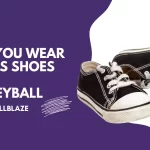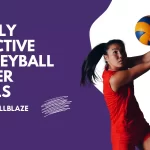Among the best moves in volleyball are pancakes, which can change the game dramatically. The excitement generated by this skill is usually great when it is executed properly by a team. It is guaranteed that the energy of your team will spike if you side out or win the point.
What is a pancake? Players pancake when they flatten their hands on the ground before the ball makes contact at that exact same spot. What is the purpose? A ball needs to be kept alive at all times. What is the challenge? It’s all about timing, placement, and guts.
When the ball comes straight at you, it won’t pancake. Now is the time to pass. Diverting, throwing an arm out, and reintroducing the ball into play can save even a ball off to one side.
What is a pancake in Volleyball?
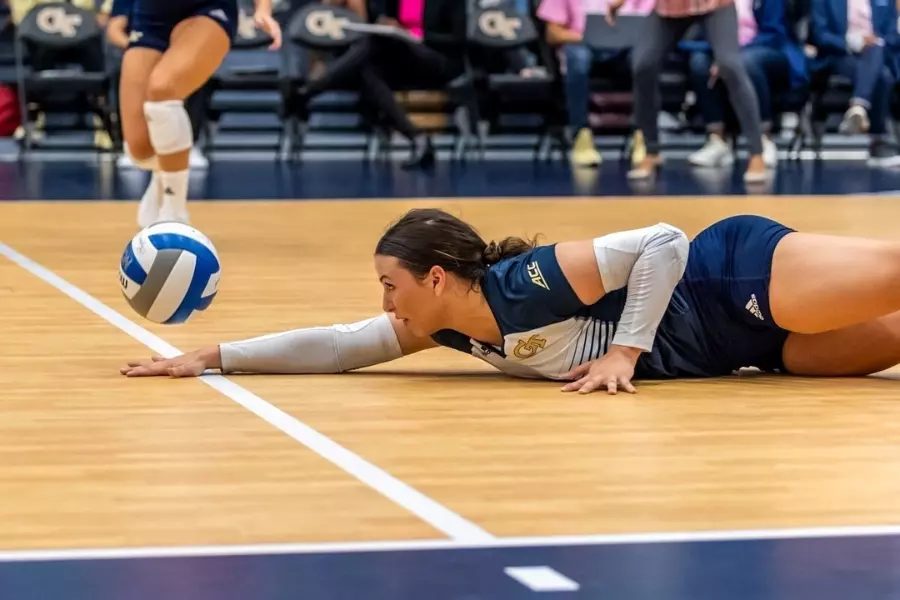
In pancakes, the hand of a player is flattened against the ground before the ball contacts it there. What is the purpose? In order to keep the ball alive. What is the challenge? It’s all about timing, placement, and guts.
When the ball comes straight at you, you won’t pancake it. Now is the time to pass. You can usually save a ball even if it is off to the side by diving, throwing your arm out, and popping it back into play before it rolls.
In a pancake, you sacrifice your body and reach as far as you can, hoping your flattened hand will generate enough bounce to allow your teammates to get the ball back in play when the ball is rapidly dropping.
There are relatively few moves like this. The opportunity to get the pancake is relatively rare, even for players who have been trained to do so. There is something special about pancakes because of this.
Recognizing an opportunity and taking it is the sign of a great player. It is often overlooked, however. You don’t need to spend valuable practice time teaching your girls how to pancake when they could be working on serving and receiving.
The pancake is a game changer, and you aren’t preparing children for higher-level volleyball if you don’t teach them how to do one (especially at a very young age). I teach (or at least review) this skill to every team I coach, even though it may be more of a mental thing.
You may enjoy reading When is volleyball season?
A Pancake’s Physical Aspects
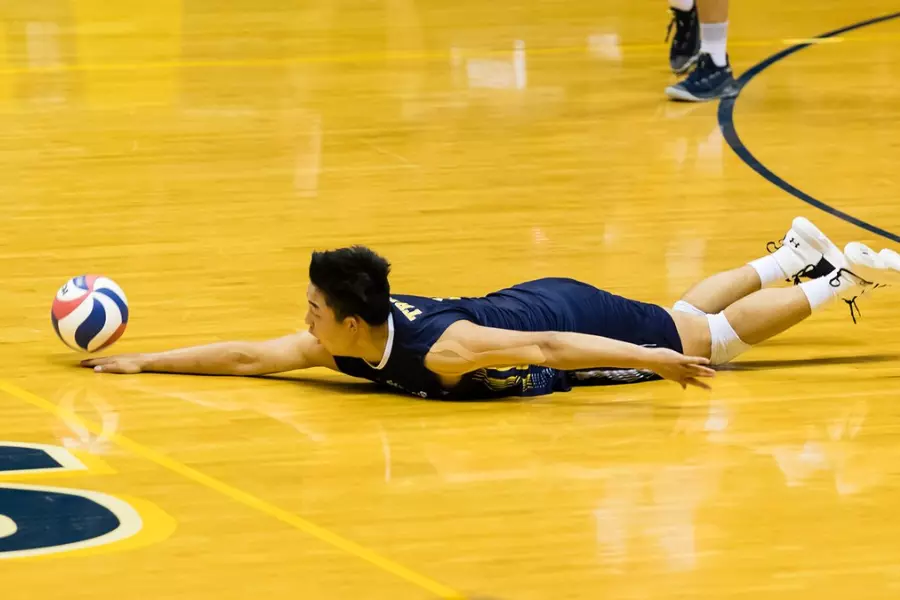
The Dive
You do not need to pancake the volleyball if you do not dive. Younger players may try to pancake the ball inappropriately when you first teach them how to do it.
Encourage them to use new skills they are learning, but correct them on the proper time to use them. It is most common to execute pancakes when moving forward quickly, but it can also be done when diving to the side.
Dive safety and pushing through the dive are the most important parts of diving rather than falling and trying to catch themselves. The younger players might not be as graceful as older players, so move slowly through this section.
The Reach
The perfect thing about pancakes is that they can be popped up with either hand. You can use your non-dominant hand as long as you can place it under the ball. In order for your team to be comfortable diving in either direction, teach your players to use both hands.
To prevent the ball from bouncing off their knuckles at an odd angle, the hand should stay flat and slightly pressed against the ground. As a result, injuries are also less likely to occur.
The Recovery
You should get up after eating a pancake and get out of the way. In this case, teammates will swarm to the area to play the next contact since the pancake only bounces the ball a few feet from the ground.
In a sideways dive, teach your players to a) get up and away from the nearest teammate, and b) jump up after a forward dive. Players can then predict who will play the next ball based on this information.
Getting a pancake is exciting, but finishing the rally is important. As soon as the player gets up and gets back to his position on the court, he increases his chances of winning the point.
You may enjoy reading How Much Does Club Volleyball Cost?
A Pancake’s Mental Aspects
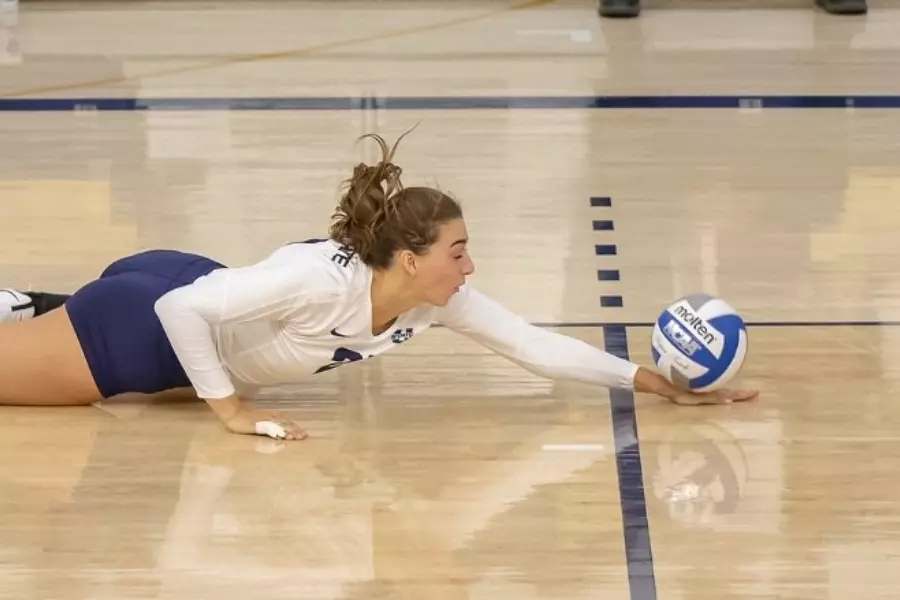
Determination
That pancake can only be obtained if you really, really, really want it! In order to defend their side of the net, players must be totally focused on the game.
During a match, your team is unlikely to generate many (if any) pancakes without this determination to keep the ball alive. It really depends on the individual whether your liberos and DS want the ball that badly.
Sacrifice
Determination is the foundation for this. It’s impossible to save the ball if you’re not determined to get it. To become a great athlete, players have to be a little bit crazy in order to go for the ball with everything they’ve got.
Failure must be ok for them. There are times when pancakes don’t turn out well. Otherwise, they will not go for it unless they know their effort will be appreciated. Neither the player nor the team culture can sacrifice without the other.
Trust
Whether you’re eating a pancake before or after, trust is essential. Regardless of the outcome, players must believe that they will be rewarded for going for a pancake.
As well as believing that their team can recover the ball after it has been saved, they should have a sense of confidence that they will do so.
Why would a player go for the ball if he or she doesn’t believe their team will move to get the ball?
Similarly, they need to know that while recovering from a pancake dive they won’t be trampled. Players in the front row who aren’t confident in their back row often turn and run into defenders who are available to make a play.
So that these types of collisions don’t occur, teach your front row to believe in their defense.
You may enjoy reading When Is National Volleyball Day?
How to Do a Pancake in Volleyball?
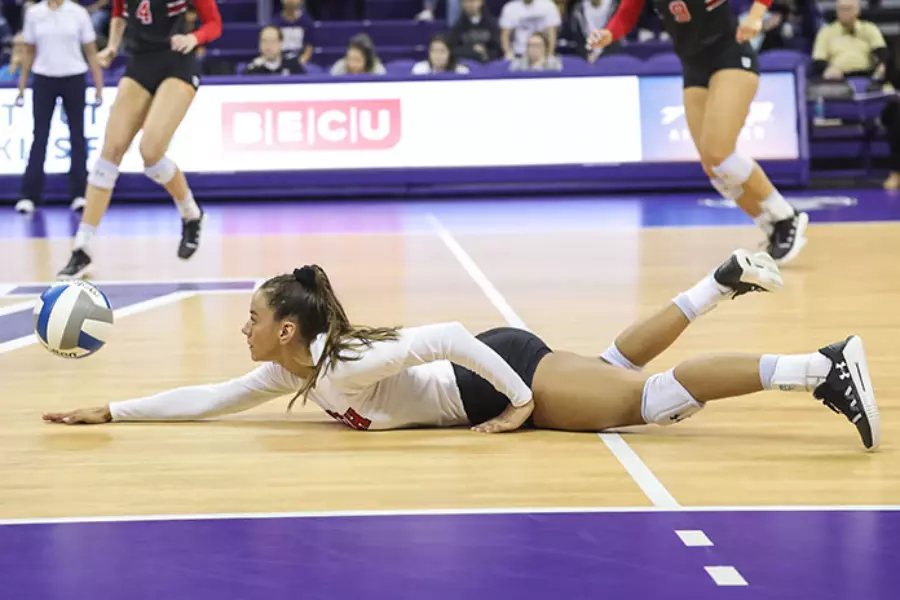
Diving and other fundamental skills are more important than learning how to do a pancake. In some cases, however, you are forced to use this tactic because you are too far ahead of the ball.
If you are playing competitively, practice is worthwhile, but you must understand that you are sacrificing most of your accuracy and power for pure reach.
Step 1: Only use pancakes when all other options have failed. It is an extremely unreliable method of last resort, so pancakes should only be used as a last resort. In midair, diving to meet the ball gives you much more control. Whenever you cannot reach the ball by any other means, try a pancake.
Step 2: Stand on your toes at the beginning. You should be ready for a tip, and you should hunker down further if one is forthcoming.
- Have a player tip toward you when practicing the pancake. A reasonable distance to dive is about five steps behind the ten foot line.
Step 3. Take a giant step forward. Right-handed people should step forward with their left foot. Put yourself in a falling position by leaning forward.
Step 4: Use as little air as possible as you dive forward. Once you have almost paralleled the ground, you can continue falling. Your front foot should be pushed forward as hard as you can. An athlete sliding forward before getting tagged will reach out his hand to touch the base. It is this motion that you should use to reach the maximum distance in the shortest amount of time.
- As opposed to an ordinary dive, in which a person may leap into the air, this dive does not require any leaping.
Step 5: Place one arm forward as you land. You should extend one arm as far as possible as you dive. As though you were high-fiving the floor, keep your hand flat with your palm down. Whenever the ball is about to land, press this hand flat against the floor.
Step 6: Use a slide when necessary. When landing, make sure your forward motion is sufficient to enable you to slide on the floor if you need a couple of extra inches. Rather than sliding on your pants and shorts first, try to slide on your kneepads. To avoid removing skin, you should only land your hand at the end of the slide.
Step 7: Rotate your hand so that the ball bounces off it. In essence, you don’t provide a better platform for the ball or even attempt to send it upward. It will only take a “Hail Mary” attempt to bring the ball back into play. The ball will bounce awkwardly or fall off the side of your hand if your hand isn’t completely flat against the ground.
When Is A Pancake Most Useful?
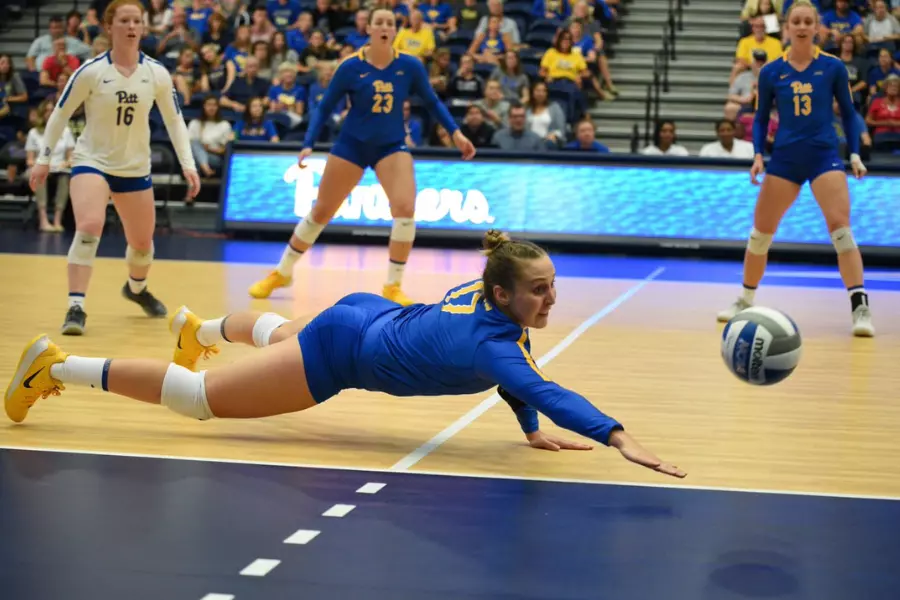
Players use pancakes in volleyball when the ball is coming down towards the ground and they need to quickly and efficiently control it by using their hands and bodies.
If the player is digging up the ball off the ground from a defensive position, or setting up a teammate for a kill from an attacking position, this could be done.
Players can also use pancakes to keep the ball in play when a ball is coming towards them at a high speed.
You may enjoy reading Why Do Volleyball Players Tape Their Fingers?
Teaching How to Pancake a Volleyball Sequence

1. Pair up players with a partner. A partner stands with his arm outstretched and his hand flat on the ground, while the other lies on the floor with his arm outstretched. To help the player on the ground understand how to form his hand for the best bounce, the standing player drops the ball 10 times on the hand of the other player. Change places.
2. Continue with one player standing and one lying on the ground. The player on the ground will be responsible for tracking the ball, while the standing player will toss it from a short distance to the player on the ground. A progression like this helps players understand where to place their hands based on the trajectory of the ball. Furthermore, they learn how to move their hands from air to flat on the ground. Before switching, do each of these 10 times.
3. The next step is for one person to begin on their hands and knees. As the player is already on the ground, the tosser will encourage them to dive for the ball. Do not allow them to fall and catch themselves, but rather have them push through the dive.
4. After the player is on the ground, they dive forward or to the side to get the ball. When you’ve switched 10 times, switch again.
5. At the end, have the tosser toss the ball to a player who is low to the ground and in ready position. Every group should have plenty of space and avoid diving into poles, walls, benches, or other groups (seems obvious, but young teams often lack this). The passer instructs the tosser when she is ready, and this should go a little slower.
If you want to continue this progression, you can add rolls to side dives or have the tosser toss to different parts of the field to allow the passer to adjust to the direction of the ball rather than knowing where it is going.
Next, run a drill that gives them a chance to practice their pancake skills. It might be possible to get a chance by playing slow Tip and Chip, or even by playing a full scrimmage. Keep away from lines that cause the girls to forget everything that they just learned, such as serving and hitting.
Training for pancaking a volleyball can take quite some time, and you might not see results right away. Your girls will be pleasantly surprised when they finally pull off this skill if you remind them frequently and encourage them to do so.
Pancake FAQs
Is a pancake a dig?
In volleyball, a pancake is a dig. A pancake dig is also known as a pancake dig. To keep the ball in play, you dive dig with one hand.
Does a pancake count as a hit?
A pancake counts as a hit. Counting as one of a team’s three hits before it’s hit back over to the other team, it counts as one of three hits.
Are pancakes legal hits?
The pancake is a legal hit in volleyball. Whenever the ball touches the ground, it becomes illegal.
Can you pancake with your foot in volleyball?
This is a legal move! Ball control isn’t good with it. It is usually the last resort to kick the ball. There was no control over the ball, so my teammate got a lot of foot digs, but I struggled to keep it alive.
Conclusion
In volleyball games, pancake digs have saved many plays. Using this dig requires several practices and confidence before being able to use it. If you practice some of the drills listed above, you will become more confident using this dig.
You can make use of the pancake if you are a defensive player to get to some hard-to-reach balls. Compared to other positions on the court, liberos tend to use this defensive technique more often. Find out everything you need to know about the position in volleyball in our article.

